As a lover of books, I’ve been meaning and wanting to regularly review them here on the blog. Unfortunately life and work seem to rarely leave much time to convert the jangly explosion of thoughts that occur when reading into coherent discussions of the books being read. For lack of in-depth reviews, here’s some short shout outs to a half dozen books I’ve read in the past 6-9 months (only a couple will fit on the front page, so please keep reading beyond that!!!):
E.H. Gombrich, A Little History of the World
Rod Palmer, Street Art Chile
Martha Cooper, Going Postal: Mailing Label Street Art
Seth Tobocman, Disaster and Resistance: Comics & Landscapes for the Twenty First Century
Chumbawamba, English Rebel Songs 1381-1984

E.H. Gombrich
A Little History of the World
Yale University Press, 2008
To be honest, the reason even picked this guy up was because of the Clifford Harper illustrations on the front cover. I was excited to find that the book is chock full of small but beautiful spot illustrations by Harper, which are an exciting treat for the eyes as your brain literally jumps through history while reading this book. There’s barely a line out of place as Harper renders the history of the world in 3 inch x 1 inch boxes, from the beginning of language to Alexander the Great to the Seven Years War. I’ve always loved seeing Harper’s work scattered across the anarchist press, but it is fabulous to see Harper taking on the breadth of the history of the world!
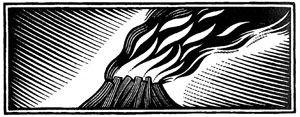

Onward to the actually text, it doesn’t much disappoint either. Originally written in the 1930’s for a middle-school age reader, when published in Germany it was a best seller. In the following decades it was translated into dozens of languages, but this is the first time it is available in English. Gombrich, in plain and simple language, carries us through the entire history of the Human-populated world. His history is extremely (or maybe I should say EXTREMELY) Euro-centric, with only a handful of pages dedicated to Asia, and none to Sub-Saharan Africa or the Americas pre-Columbus. This is a major fault, but I don’t think it should stop a reader from benefiting from what Gombrich has done, which is give a concise and easy to understand history of Western civilization, from Egypt to the fixing of modern European nation states.
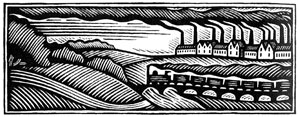
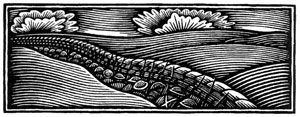
I wouldn’t suggest reading this if you are looking for a detailed political economy of Europe or want to understand the finer details of the transition from feudalism to capitalism, but, if you, like me, are often at a loss as to how specific pieces fit into the general puzzle of history, there might be no greater resource. A few quick page flips and a couple paragraphs of reading and Gombrich helps us place the who the Visagoths were, or how Rome was captured by the Gauls, or how Germany became a modern nation state. A must read for anyone that wants to get a basic understanding of European History in a few nice afternoons on the beach!
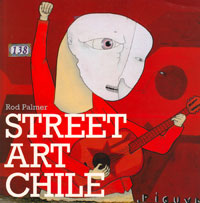
Street Art Chile
Rod Palmer
Street Art Chile
Gingko Press, 2008
After Kevin (from Justseeds) came back from Chile a couple years back with stories of anarchist mural brigades and political stencil crews, I was anxious and excited to get my hands on this book. Unfortunately I have to say it is a little disappointing. To be fair to Palmer, he may effectively capture the Chilean graffiti and street art scene, I’ve never been so I can’t say, but if so, then the scene is not as exciting as I would have hoped. There are some real standouts in the book, and I’ll get to those below, but 75% of it is filled with the same “international” looking street art that seems to have sprouted everywhere. The recipe seems largely rote at this point: Take NYC graffiti as your base, throw in a quart Euro wild-style and character development, add a cup of S. American pichacão and Os Gemeos, mix in 2 tablespoons of Barcelona street mural craziness, and a pinch of international stencil culture. It may be great that all these international artists are getting to travel around the world and paint, and the internet is beaming flics from the farthest reaches into billions of homes, but it seems to really be homogenizing what ends up on the street.
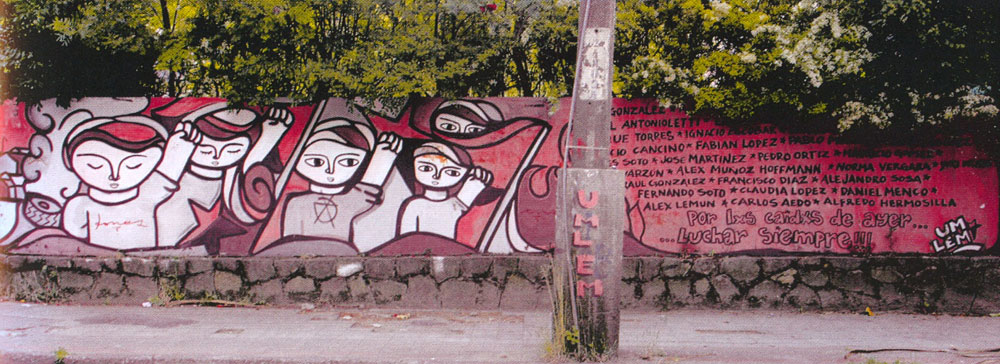
To his credit, Palmer gives a solid overview of the history of street painting and murals in Chile, and directly connects it to the political struggles in the country. He discusses the influences of the Mexican muralists, and introduces the Brigadas Ramona Parra and other communist mural brigades. The Brigadas were cultural wings of political grouping (Communist and Socialist Parties) who mastered the art of the hit and run mural, developing a unique style in which a dozen artists could paint a 30 foot ten color mural in a matter of minutes. This history alone, which is largely unavailable in English, almost makes the book worth the cover price, but unfortunately there’s only a couple pages of visual documentation, foregoing any real pictoral history of this unique street art form for 100 pages of largely generic contemporary street art. (For a more in-depth written and visual history – in Spanish – of the Brigadas, try to find a copy of Eduardo Castillo Espinoza’s Puño y Letra: movimiento social y communicación gráfica en Chile, or check out the BRP website.) Other highlights include Vazko and Peka Crew, who have developed a fairly unique style, Peka’s mad scientist hybrid of Picasso and Haring explodes off the page, finally giving the reader an idea of the power the work might carry on the street.
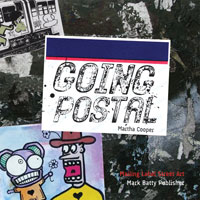
Martha Cooper
Going Postal: Mailing Label Street Art
Mark Batty Publishers, 2008
Cooper maybe has created the perfect coffee table sticker book (which unfortunately begs the question, Does the world need a coffee table sticker book?). Small (6.5″x6.5″) and unassuming, like graffiti stickers themselves, she collects and documents the ways street artists and graffiti writers alter the US Post Office Priority Mail sticker. A nice diverse collection of material, there’s nothing particularly stunning in here, but then again, there are few artists making stunning stickers. Most are fairly raw and quick, from orderly repeated hand styles to sloppy, ugly characters. Stain’s stickers stand out, as he clearly puts more time into them than most of the other artists in the book. The small selection of stickers from other countries are also nice, it’s interesting to see how different cultural contexts generate different simple iconographies (I particularly like the stickers from Berlin, which I believe come out of the weirdo art-freakout shop Fleisherei). If this book was a 300 page over-sized tomb it would be unbearable, but as a cute 100 page little book for $10, it’s quite charming.
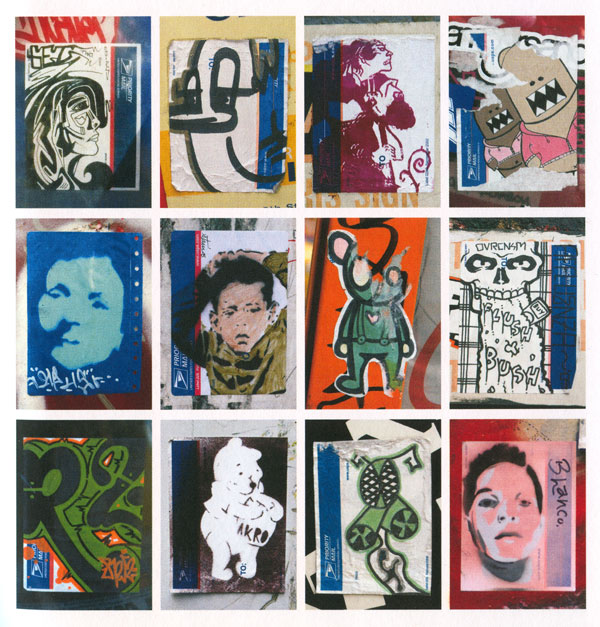
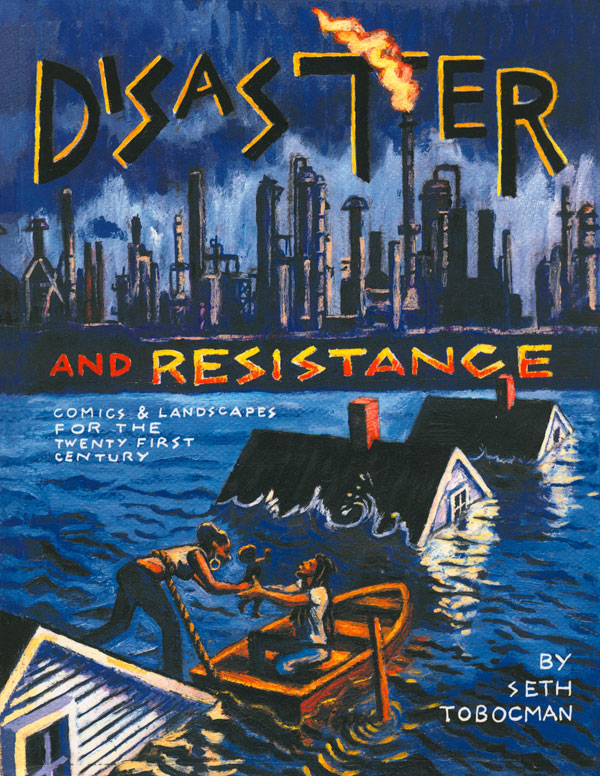
Seth Tobocman
Disaster and Resistance: Comics & Landscapes for the Twenty First Century
AK Press, 2008
I was first introduced to Seth Tobocman when I was in high school, back in the early 1990s. The first Gulf War was looming on the horizon, nothing made much sense, and I stumbled upon an issue of World War 3 Illustrated, the political comic book Seth started back in 1980 with Peter Kuper. In it, artists like Seth and Peter worked through their feelings and analysis of the war and US imperialism in comic and graphic form, something that lightning struck my 16 or 17 year old punk rock brain in a way that long Chomskian essays couldn’t. Soon after finding WW3, I picked up a copy of Seth’s first book, You Don’t Have to Fuck People Over to Survive. It sounds trite, but that shit changed my life. I had been making art since I was 3 years old, but Seth showed me that you can could make simple, black and white graphics that worked like a chainsaw, cutting through the bullshit and laying bare the capitalist system. And obviously I wasn’t the only one, as graphics from that book quickly spread across the globe in the form of street stencils, stickers, patches, t-shirts, zine covers, protest posters and murals on the sides of social centers. My guess is that 75% of the people that have used and loved Seth’s images have no idea he even made them. This guy is a genius, and by bragging rights should be a household name. I’m excited that he’s working with AK Press and hopefully this book is introducing him to a new generation.

On to the book at hand. Disaster and Resistance collects a good chunk of Seth’s work from the last 10 years, starting with the WTO protests in Seattle and the launch of the counter-globalization movement in 1999, moving to 9/11 in 2001 and the start of the latest Gulf War in 2003, taking a brief detour to look at the developing Apartheid in Israel and Palestine, and ending with the flooding of New Orleans in 2005 and it’s aftermath. As you can tell by the table of contents, the book begins on a high note and then drops us into the disaster of our current existence, but Seth’s images of disaster aren’t simply disastrous, they are both human and humane, telling us the stories of everyday people and their struggles, their setbacks and small victories. Tobocman is strongest when he zooms in on real people living and fighting. He also has a great ability to render the forces we are up against in simple and stark images, but sometimes falls into describing the much more abstract “evil” of the system, which is one of the few places I feel he falters.
Although I enjoy the narrative comics, I still am most impressed with Seth’s ability to capture complex ideas and feelings in the most simple of graphics. His economy of line is astounding, and he’s lost none of the punch that defined You Don’t Have to Fuck People Over. Thankfully Disaster is sprinkled with full page comic panels and a collection of punchy images from recent flyers and graphics. Another victory from a master of the political graphic.
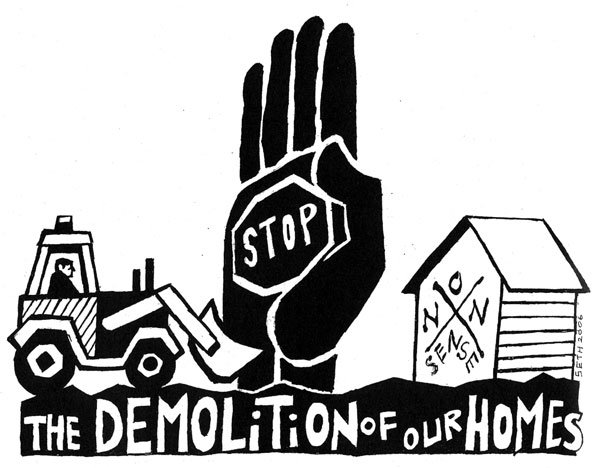

Chumbawamba
English Rebel Songs 1381-1984
PM Press
A CD, not a book, but well worth a review. To be honest, it feels a little strange to be reviewing music, since I know the world is filled with music fanatics and afficienados, and I’m definitely not one of them. I can’t remember the last time I bought any music, or even listened to something that someone didn’t tell me I should. But, it feels like Chumbawamba is doing something here which much more resembles what I’m trying to work towards as an graphic artist and curator than the modus operandi of your typical band. The subtitle of the record is “In the name of all the poor and oppressed in the Land of England,” and Chumbawamba has done an amazing job digging through the musical history of the island and marshaling that history in the name of the downtrodden. By rearranging and rerecording these thirteen songs, they’ve reinvigorated 600 hundred years of English class war, opening a window to understanding how rebels of the past fought both the monarchy and the development of capitalism, and how those struggles resonate in recent history, from the 80s Miner’s Strikes to the 90s fight against the Poll Tax.
I remember when Chumba originally released this as a 10″ back in 1988. I was a teenager at the time, and punk rock was supposed to be loud and pissed off, so I couldn’t wrap my head around its acoustic textures and a capella harmonies. I’m really glad PM has made it available again, at the very least so ex-angry punks like myself can finally hear what we missed the first time around. It’s a nice package too, a tri-fold cardboard sleeve with archival graphics and a nice booklet with explanations and origin stories for all the songs. Not to be missed!!





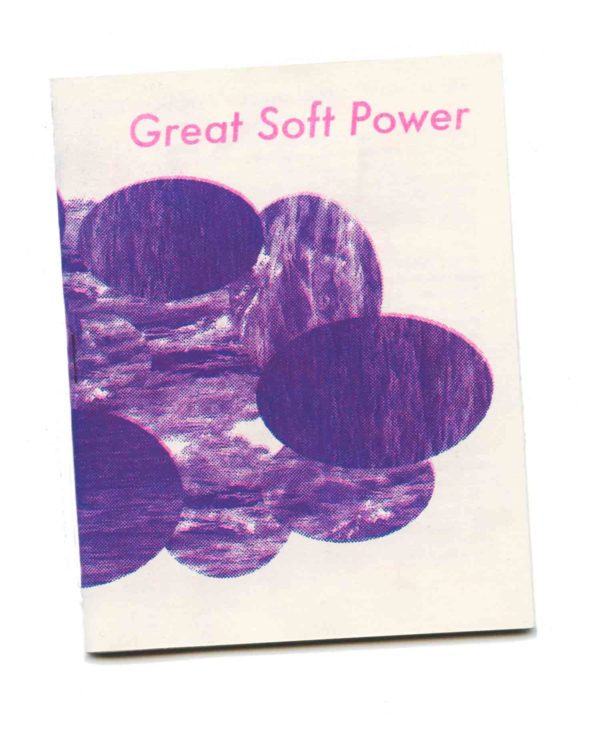

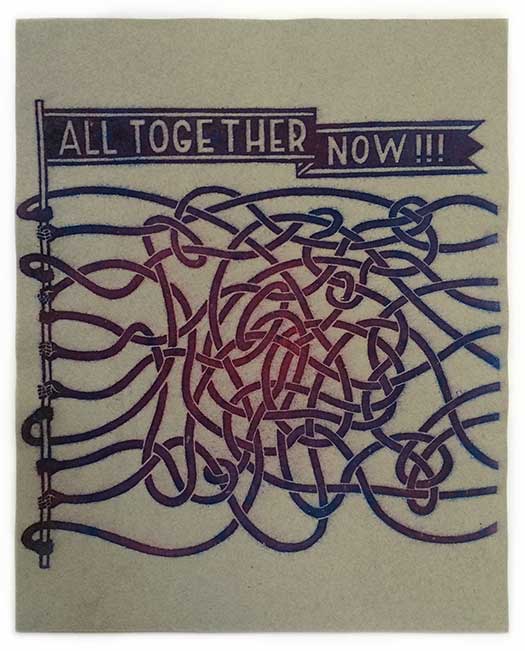
Great record and artwork!
You should check out Chumbawamba’s newest release ABCDEFG, covers some great topics on the folkier end of the spectrum!